70+ Disheartening Worldwide Statistics on Human Trafficking
Let’s take a deeper dive into a basic overview of human trafficking on a global scale, who’s most at risk, the types of trafficking across the world, and how traffickers move victims for more exploitation. Here is our list of over 70 worldwide statistics on human trafficking.

Human trafficking is the practice of exploiting adults and children for use as commodities, or objects, in conditions of sexual and labor servitude. Also referred to as modern slavery, human trafficking is where people illegally trade human beings through recruitment or abduction.
Traffickers use tactics such as…
- Luring people in with false promises of economic opportunity
- Withholding identification, work authorization, or travel documents
- Demanding repayment with alleged or real debts
- Using violence
- Threatening to use violence
- Monitoring and surveillance of the target
- Paying someone very little for the victim’s work
- Not paying at all for the victim’s work
As you can see, it’s a horrible criminal enterprise where people profit off of the free will of others. Traffickers impose misery and forced servitude on their victims.
To make matters worse, human trafficking is extremely profitable. Traffickers will target anyone to make an illegal buck. Men, women, and children of any race, any age, and in any condition can become victims.

Let’s take a deeper dive into a basic overview of human trafficking on a global scale, who’s most at risk, the types of trafficking across the world, and how traffickers move victims for more exploitation.
Here is our list of over 70 worldwide statistics on human trafficking.
General Worldwide Human Trafficking Statistics
Human trafficking on a global level is worse than we could ever imagine.
Each year, the world discovers more cases than the year prior. Part of the reason we know of more cases is that law enforcement across the globe improves over time, which is a good thing.
Another reason is that it’s getting increasingly harder to hide people, isolate victims, and keep individuals off of the map.
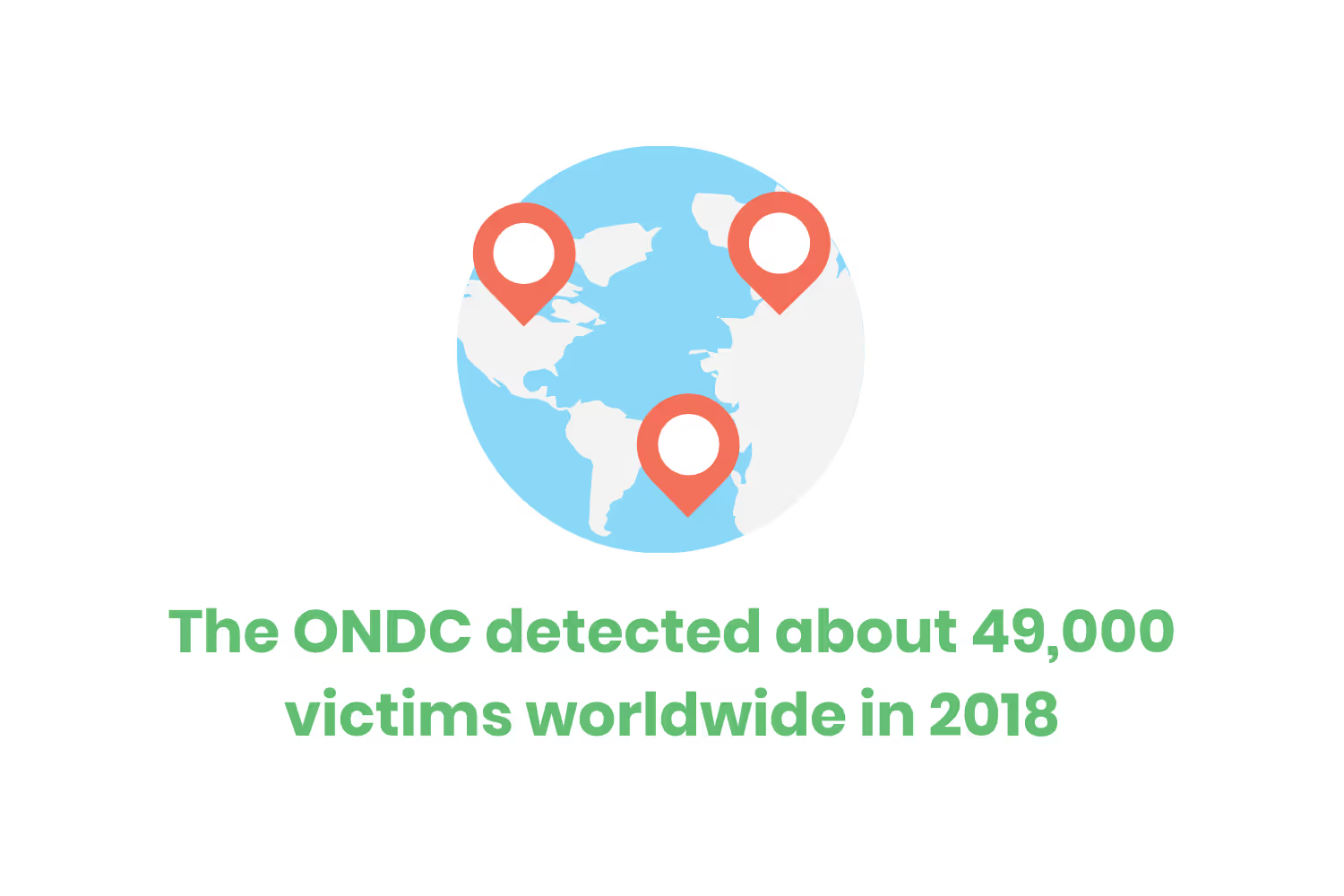
However, the main reason why there are more identified human trafficking cases is that it’s becoming a more “popular” crime syndicate. The “industry” of human trafficking grows each year, creating more profits as more victims become trapped in the world of modern slavery.
We can only estimate how many people are victims of human trafficking on a global level.
Experts estimate that we only know about less than 1% of victims. Local law enforcement cannot intervene in unknown situations. Therefore, many victims continue to remain enslaved and traffickers still prowl the streets.
Below are some general global human trafficking statistics to help you understand the prevalence of modern-day slavery across the world and where it mostly occurs.
- The ONDC detected about 49,000 victims worldwide in 2018. This is up from less than 20,000 identified victims in 2003.
- Since 2014, the number of identified victims rose by 60%.
- The law ends up prosecuting less than 5% of traffickers.
- As of 2018, the counties with the largest number of people in modern slavery include…
- India: 7.99 Million
- China: 3.86 Million
- Pakistan: 3.29 Million
- North Korea: 2.64 Million
- Nigeria: 3.39 Million
- The top five countries with the highest prevalence of modern slavery as of 2018 are.
- North Korea: 104.6 per 1000 population
- Eritrea: 93 per 1000 population
- Burundi: 40 per 1000 population
- Central African Republic: 22.3 per 1000 population
- Afghanistan: 22.2 per 1000 population
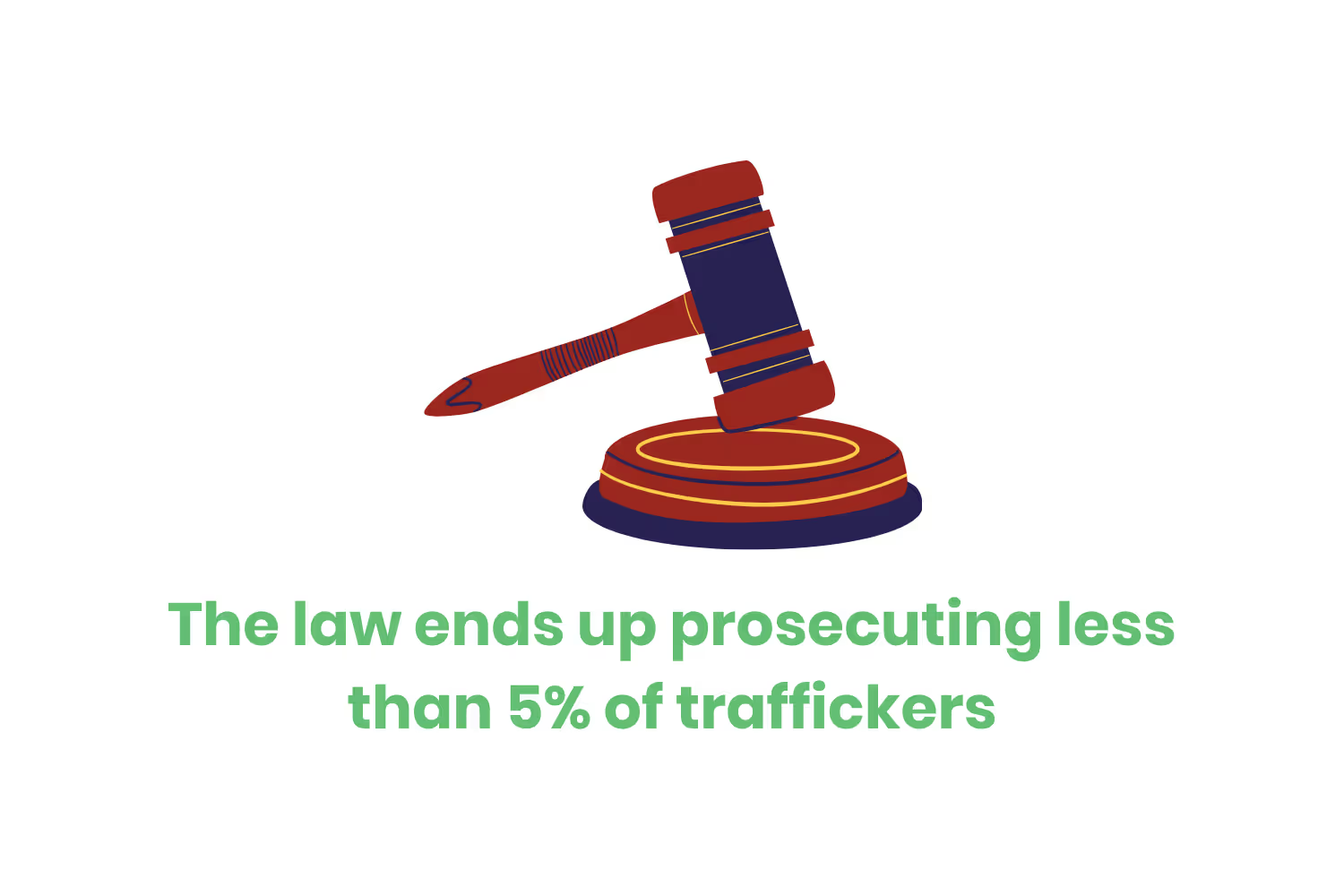
Worldwide Human Trafficking Demographics
Human trafficking makes a great deal of profit. That’s why it’s such a predominant form of illegal activity. But to generate so much money, traffickers need to carefully select their victims.
Various types of trafficking in a variety of regions in the world require different types of demographics. Sometimes adult women in their 30s are the predominant type of victim in the sex trafficking sector. Some types of labor trafficking prefer adult make migrants while others prefer small children.
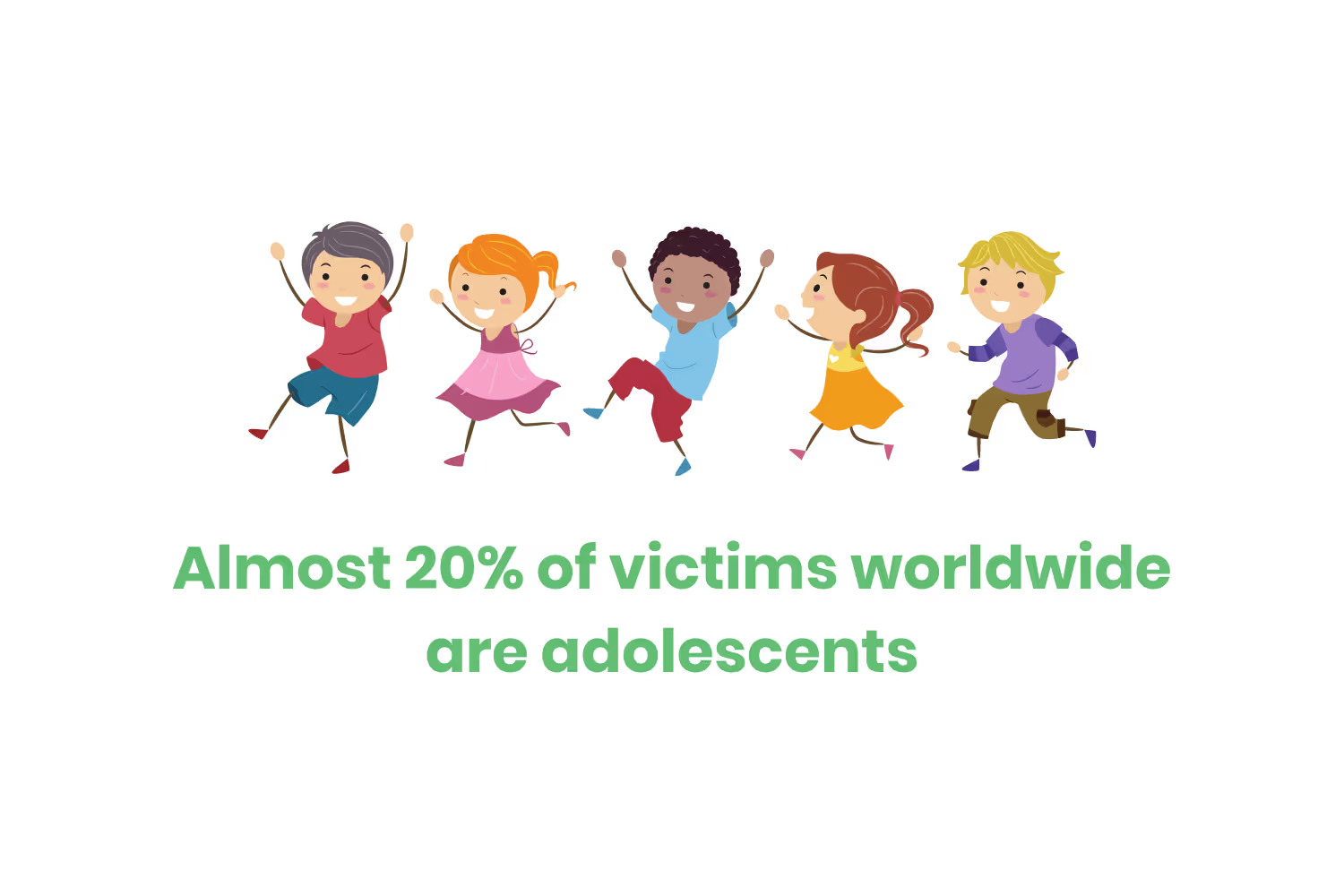
The victim demographics for the different forms of trafficking can vary between neighboring countries. Below are some global human trafficking statistics to help explain who is likely to become a victim of the industry.
- 65% of victims are female.
- 46% of victims are adult women.
- 19% of victims are adolescent girls.
- 35% of victims are male.
- 20% of victims are adult men.
- 15% of victims are adolescent boys.
- Nearly 60% of detected labor trafficking victims are male.
- The majority of sex trafficking victims are female.
- In Europe, the gender breakdown for sex trafficking is closer to 50/50.
- Almost 20% of victims worldwide are adolescents.
- Africa and Southern Asia are the two regions with the most child sex trafficking cases.
- Around 50% of the cases in the region involve adolescents.
- In some parts of Africa, children constitute nearly 100% of victims.
- 30 to 38-year-olds are more likely to become a victim of sex trafficking worldwide.
Types of Worldwide Trafficking
There are two primary types of human trafficking: forced labor and sex trafficking. There’s a third category labeled as “other”.
Other types of trafficking include…
- Forced marriage
- Organ removal
- Forced military services
Due to how infrequently these other types of trafficking occur, we didn’t include them in the statistics below.
Each subset of the trafficking industry has unique features that we need to address. Here are some global human trafficking statistics based on the type of trafficking.
Sex Trafficking
The vast majority of human trafficking happens in the sex trafficking category.
Many traffickers cater to this sector because a single victim generates roughly $100,000. On top of that, sex trafficking generates a huge return on investment.

So, who is most at risk of becoming a sex trafficking victim? People end up in sex trafficking for a multitude of reasons, including…
- Recent migration or relocation
- Mental health issues
- Unstable housing
- Homeless/runaway youth
- Drug abuse
These are people who may be easily coerced or manipulated into trusting a stranger with their safety. Most trafficking doesn’t involve abduction or chains on the bedpost like in movies. Deceit is a much more practical approach when trying to get someone to comply with their sex trafficking situation.
Below are over 20 human trafficking statistics specific to sex trafficking on a worldwide scale.
- 79% of human trafficking is sex trafficking
- 77% of sex trafficking victims are female
- Another 17% are male
- The rest are under the label of "unknown"
- There are approximately 35 million victims of sex trafficking on any given day
- Sex trafficking can yield a return on investment between 100% to 1,000%
- The sex trafficking industry alone has a market value of $99 billion
- This means that the sex trafficking industry is larger than the global cocaine market and the global PC market.
- Using a random sample of victims, the most common venues for sex trafficking include…
- 1,116 incidents in escort services
- 939 incidents in pornography
- 626 incidents in illicit massage, health, and beauty
- 465 incidents in residential-based commercial sex
- 295 incidents in personal sexual servitude
- 210 incidents in outdoor solicitation
- 202 incidents in domestic work
- 126 incidents in bars, strip clubs, and cantinas
- 122 incidents in illicit activities
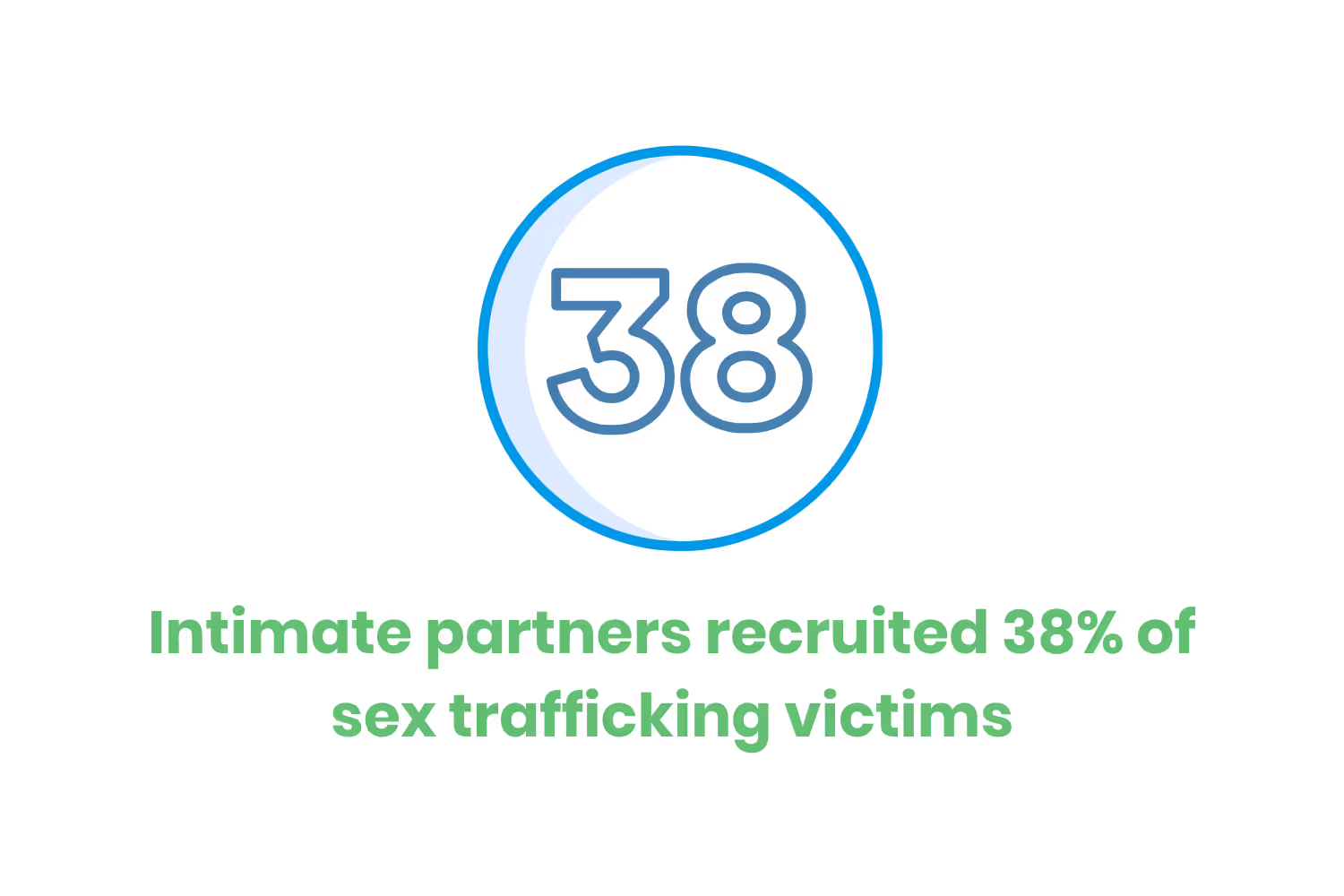
- Intimate partners recruited 38% of sex trafficking victims
- Family recruited 27.1%
- “Other” recruited 21.3%
- A friend recruited 14.6%
- Over 50% of the world’s sex trafficking occurs in the U.S.
- The average profit for a female sex trafficking victim is $100,000
- The average for both genders is $21,800
Labor Trafficking
Labor trafficking usually requires victims to perform physical, intensive tasks. This type of trafficking can happen in households, within government positions, or in legal corporations.
The majority of people end up in the private economy. After all, it’s easier to hide labor trafficking victims from the world in the private world. Traffickers can more easily prevent the victims from interacting with the public and escaping.
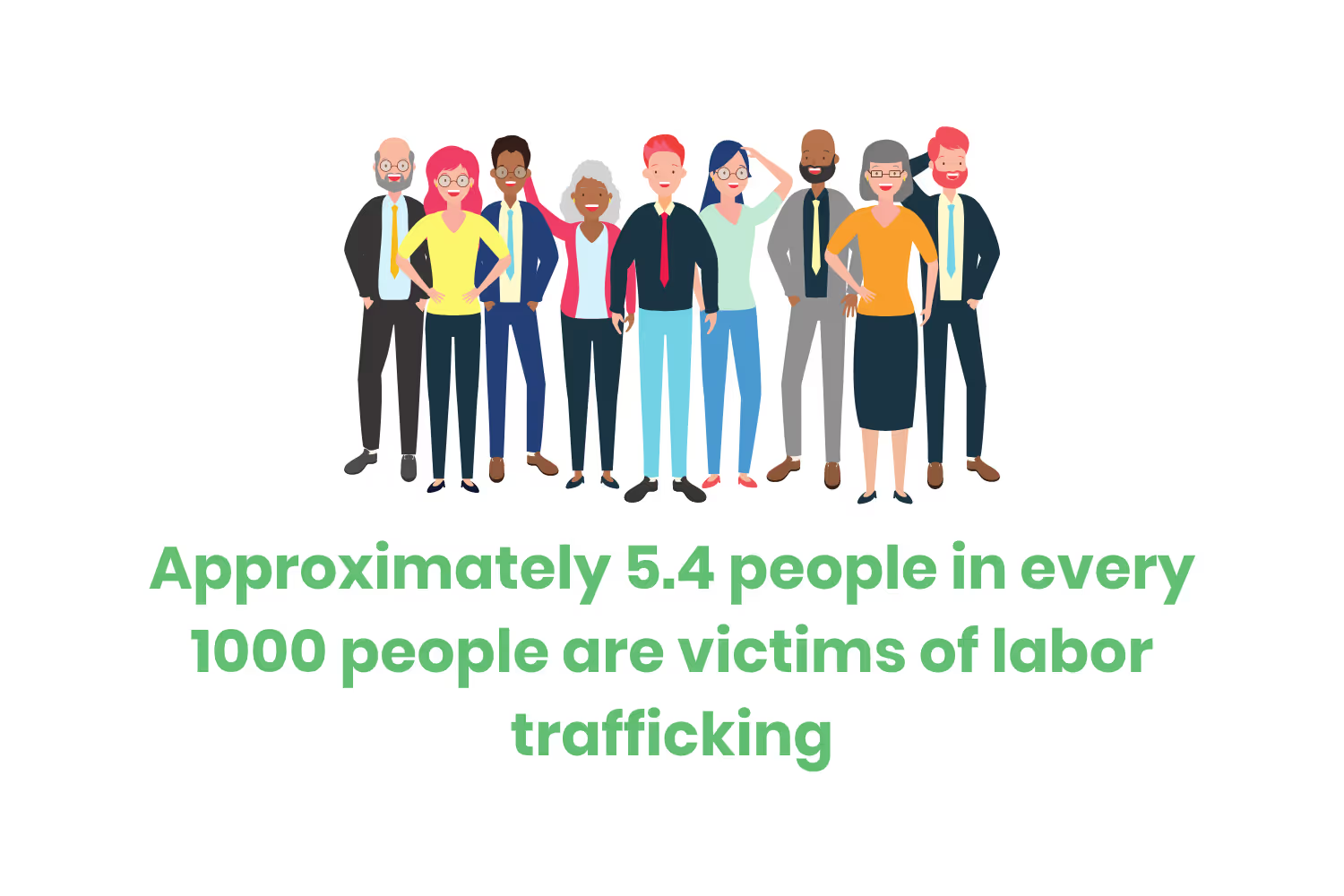
It’s also important to mention that certain parts of the world are more prone to labor trafficking than others. The majority of labor trafficking occurs on the Asian continent, partly because of the sheer volume of people residing there. However, labor trafficking happens on every continent and in every country.
Below are 15 global human trafficking statistics concerning international labor trafficking…
- Forced labor constitutes 28.7% of human trafficking.
- Approximately 5.4 people in every 1000 current inhabitants of the earth are victims of labor trafficking.
- 67% of victims in labor trafficking are male.
- Another 14% are female
- The the rest are under the label of "unknown"
- The main sectors for labor trafficking include…
- 30% domestic work
- 16% construction
- 10% agriculture
- 9% manufacturing
- 8% hospitality
- The labor trafficking industry generates $43.2 billion
- Domestic servitude generates $8 billion
- 16.55 million victims are in forced labor in Asia and the Pacific
- 3.42 million are labor trafficked through Africa
- 3.25 million are labor trafficked through Europe and the Central Asia Region
- 1.28 million are labor trafficked through the Americas.

Moving Trafficking Victims
Some types of trafficking require the traffickers to move victims across international borders.
Although the victims have access to the public and can speak out to law enforcement personnel, in most cases they’re afraid to seek help. The traffickers instill fear through a web of lies and coercion so that their victims keep quiet when in an airport, hotel, or traffic stop.
Traffickers are willing to take the risk of exposing their victims to the public because of how much money they make off of the exploitation. They carefully plan the trip and calculate the risk to make sure that the victims stay under their control the entire time.
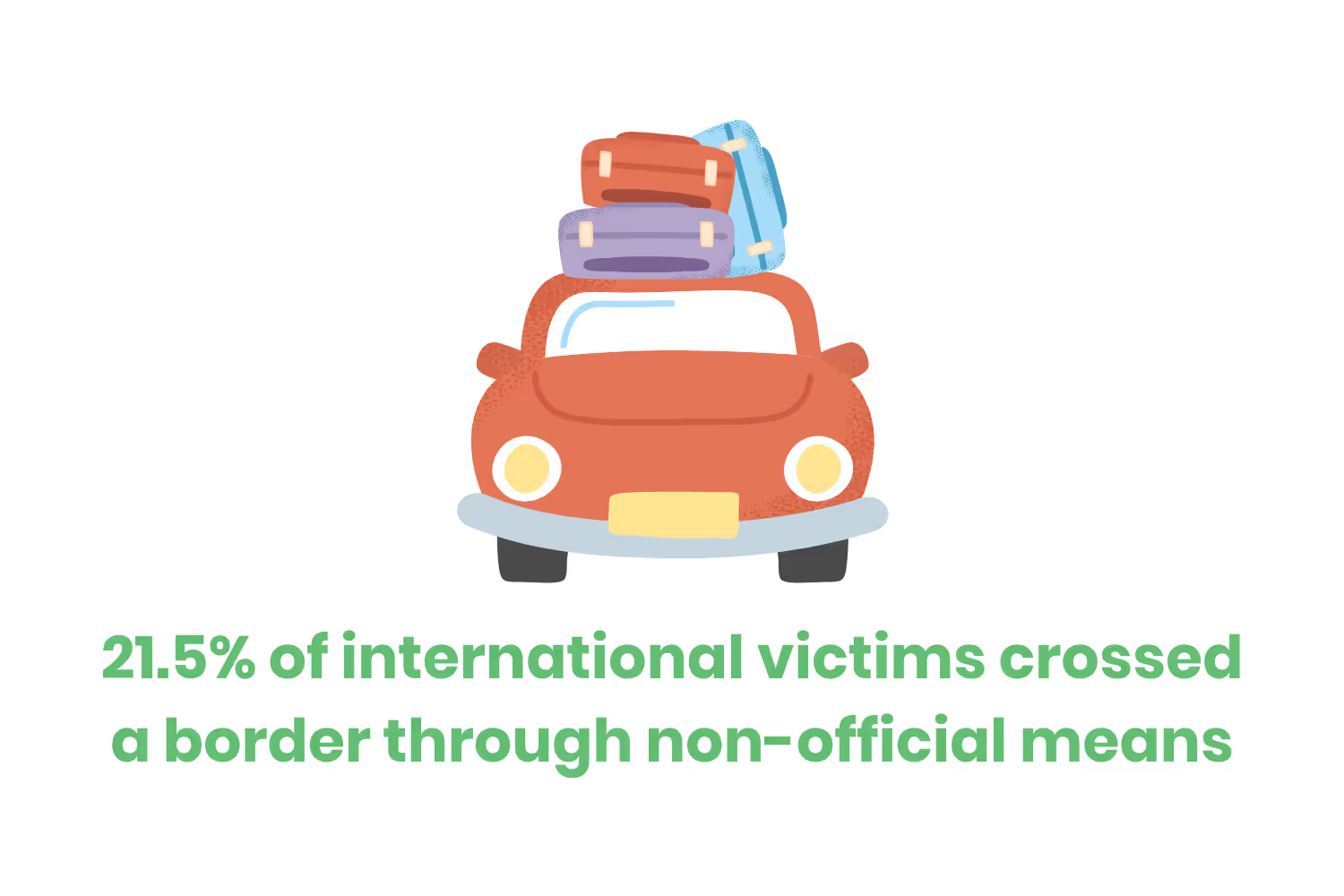
Below are some global human trafficking statistics about moving and traveling…
- 12% of victims were subject to trafficking within the same subregion
- 8% of trafficking occurred within the same region
- 15% of trafficking occurred interregional
- 65% of detected victims were within their borders
- 12% were in the same subregion
- 8% were within the same subregion
- 15% were from other regions
- 89.5% of victim journeys trafficked internationally occurred at an official border control point
- Examples include airports and highway border control points
- 21.5% of international victims crossed a border through non-official means
- Only 44% of trafficked children went through an official border control point when trafficked internationally
- Two-thirds of victims trafficked internationally endure exploitation during the journey, regardless of how the transportation occurs
Conclusion
The worldwide human trafficking situation is grim. Millions of people across the world experience all kinds of abuse and horrors. A victim can find themselves in the trafficking world for several years, if not the rest of their lives.
The best way to protect yourself and your community is through education. With knowledge on your side, you can take preventative measures so you don’t fall into the trafficking trap.
Many countries have laws in place to try and identify, detain, and convict traffickers. Some even have laws to convict buyers. Some countries do a better job than others, but the world as a whole is slowly trying to free victims and prosecute traffickers.
Sources
Emphasize your product's unique features or benefits to differentiate it from competitors
In nec dictum adipiscing pharetra enim etiam scelerisque dolor purus ipsum egestas cursus vulputate arcu egestas ut eu sed mollis consectetur mattis pharetra curabitur et maecenas in mattis fames consectetur ipsum quis risus mauris aliquam ornare nisl purus at ipsum nulla accumsan consectetur vestibulum suspendisse aliquam condimentum scelerisque lacinia pellentesque vestibulum condimentum turpis ligula pharetra dictum sapien facilisis sapien at sagittis et cursus congue.
- Pharetra curabitur et maecenas in mattis fames consectetur ipsum quis risus.
- Justo urna nisi auctor consequat consectetur dolor lectus blandit.
- Eget egestas volutpat lacinia vestibulum vitae mattis hendrerit.
- Ornare elit odio tellus orci bibendum dictum id sem congue enim amet diam.
Incorporate statistics or specific numbers to highlight the effectiveness or popularity of your offering
Convallis pellentesque ullamcorper sapien sed tristique fermentum proin amet quam tincidunt feugiat vitae neque quisque odio ut pellentesque ac mauris eget lectus. Pretium arcu turpis lacus sapien sit at eu sapien duis magna nunc nibh nam non ut nibh ultrices ultrices elementum egestas enim nisl sed cursus pellentesque sit dignissim enim euismod sit et convallis sed pelis viverra quam at nisl sit pharetra enim nisl nec vestibulum posuere in volutpat sed blandit neque risus.

Use time-sensitive language to encourage immediate action, such as "Limited Time Offer
Feugiat vitae neque quisque odio ut pellentesque ac mauris eget lectus. Pretium arcu turpis lacus sapien sit at eu sapien duis magna nunc nibh nam non ut nibh ultrices ultrices elementum egestas enim nisl sed cursus pellentesque sit dignissim enim euismod sit et convallis sed pelis viverra quam at nisl sit pharetra enim nisl nec vestibulum posuere in volutpat sed blandit neque risus.
- Pharetra curabitur et maecenas in mattis fames consectetur ipsum quis risus.
- Justo urna nisi auctor consequat consectetur dolor lectus blandit.
- Eget egestas volutpat lacinia vestibulum vitae mattis hendrerit.
- Ornare elit odio tellus orci bibendum dictum id sem congue enim amet diam.
Address customer pain points directly by showing how your product solves their problems
Feugiat vitae neque quisque odio ut pellentesque ac mauris eget lectus. Pretium arcu turpis lacus sapien sit at eu sapien duis magna nunc nibh nam non ut nibh ultrices ultrices elementum egestas enim nisl sed cursus pellentesque sit dignissim enim euismod sit et convallis sed pelis viverra quam at nisl sit pharetra enim nisl nec vestibulum posuere in volutpat sed blandit neque risus.
Vel etiam vel amet aenean eget in habitasse nunc duis tellus sem turpis risus aliquam ac volutpat tellus eu faucibus ullamcorper.
Tailor titles to your ideal customer segment using phrases like "Designed for Busy Professionals
Sed pretium id nibh id sit felis vitae volutpat volutpat adipiscing at sodales neque lectus mi phasellus commodo at elit suspendisse ornare faucibus lectus purus viverra in nec aliquet commodo et sed sed nisi tempor mi pellentesque arcu viverra pretium duis enim vulputate dignissim etiam ultrices vitae neque urna proin nibh diam turpis augue lacus.




